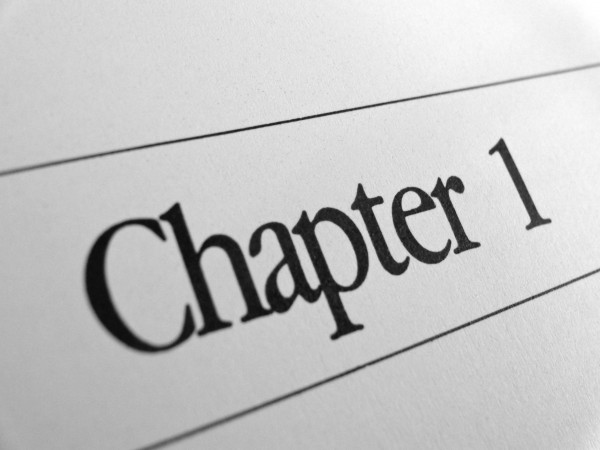Your first chapter is the first impression your reader has of your novel. So you want to make it count. Bore them with too much exposition, long forays into backstory, and superfluous characters and details, and your reader will grow bored, overwhelmed, and will stop reading.
In this episode, I’m sharing 5 ways to nail your first chapter. So you can bind your reader to your story, and leave them hungry for more.
Download as an MP3 by right-clicking here and choosing “save as.”
Episode at a glance:
[02:50] One of the most common missteps I see with first chapters is that it’s trying to accomplish too much. But there’s more to Act 1 than Chapter 1. And many things packed into the first chapter can be parsed out slowly.
Learn what the purpose of your first chapter is, and what it isn’t.
[03:58] 1. Use less exposition. Too much exposition bores your reader and throws them out of your story. Learn how to write exposition that doesn’t sound expositional at all.
[11:18] 2. Limit how many character introduced.
The reader can only absorb so much. You only need to introduce us to two or three characters, and make sure your protagonist gets most of the focus. I’ll share some questions to ask to choose which characters belong in your first chapter, which ones can come in later, and which ones to discard.
[16:15] 3. Don’t veer off into backstory.
Backstory is anything that happened before page one, and it’s mostly a matter of placement. I’ll share a new way to think about backstory so you know how much to include and when to move into the past.
[20:10] 4. Keep it focused on one event.
Learn what an event is, how it’s structured, and how to focus your first chapter (and all your chapters) into one dramatic container.
[24:53] Don’t forget conflict.
I’ll give you a formula for creating conflict and tension that keeps readers riveted.
Links mentioned in this episode:
Episode 125: How To Write Conflict Into Every Scene
Someday This Pain Will Be Useful To You by Peter Cameron
Revolutionary Road by Richard Yates
The Mars Room by Rachel Kushner
One Day by David Nicholls
Rate, Review, and Follow on Apple Podcasts.
“I love Writer Unleashed!” If that sounds like you, please consider rating and reviewing my show. This helps me support more writers — just like you —to bring the story burning in their imagination onto the page. Click here, scroll to the bottom, tap to rate with five stars, and select “Write a Review.” Then be sure to let me know what you loved most about the episode!
Also, if you haven’t done so already, follow the podcast. It’s chock full of writing tips and inspiration every Tuesday. Follow now!
Want to join a community of like-minded writers? Need inspiration and support with your writing? Click here to join our FREE Private Facebook Community.
Subscribe to Writer Unleashed and never miss an episode.
In this episode, I’m sharing 3 techniques to master emotions in your story. So you can move readers in a way that stays with them long after they finish your pages. A story they can’t stop thinking and talking about.
Download as an MP3 by right-clicking here and choosing “save as.”
Episode at a glance:
[03:05] When a story truly moves us, it’s not because of beautiful writing or a strong voice. It’s not because of what happens on the plot level. Certainly, we want all those things. But those things on their own, don’t move us emotionally. What makes a story unputdownable and unforgettable is that the reader goes on an emotional journey of his or her own. They don’t just feel for your characters they feel with your characters.
[05:46] Think Big. Write Small.
Often writers will write large emotions like love, grief, anger, joy, jealousy, etc. too directly, or melodramatically. And that short circuits the reader’s desire to feel it. The secret is to use restraint and get at those big emotions aslant, through small emotionally loaded details.
[09:50] Emotional Surprise.
You want to go against what readers’ expectations of what a character would feel in any given situation. At the same time the emotion should feel true to the character. Learn how to write against reader expectations.
[14:25] Select 1 setting detail as a reflective element
Often writers will use setting details for mere decoration or atmosphere. Using a particular setting detail – rain for example – can reflect a character’s emotions and even track their emotional journey.
Links mentioned in this episode:
Episode 180: Show, Don’t Tell: Your Top Questions Answered
One Day by David Nicholls
Rate, Review, and Follow on Apple Podcasts.
“I love Writer Unleashed!” If that sounds like you, please consider rating and reviewing my show. This helps me support more writers — just like you —to bring the story burning in their imagination onto the page. Click here, scroll to the bottom, tap to rate with five stars, and select “Write a Review.” Then be sure to let me know what you loved most about the episode!
Also, if you haven’t done so already, follow the podcast. It’s chock full of writing tips and inspiration every Tuesday. Follow now!
Want to join a community of like-minded writers? Need inspiration and support with your writing? Click here to join our FREE Private Facebook Community.
Subscribe to Writer Unleashed and never miss an episode.
In this episode, I’m sharing 3 techniques to master emotions in your story. So you can move readers in a way that stays with them long after they finish your pages. A story they can’t stop thinking and talking about.
Download as an MP3 by right-clicking here and choosing “save as.”
Episode at a glance:
[03:05] When a story truly moves us, it’s not because of beautiful writing or a strong voice. It’s not because of a great plot. Certainly, we want all those things. But those things on their own, don’t move us emotionally. What makes a story unputdownable and unforgettable is that the reader goes on an emotional journey of his or her own. They don’t just feel for your characters they feel with your characters.
[05:46] Think Big. Write Small.
Often writers will write large emotions like love, grief, anger, joy, jealousy, etc. too directly, or melodramatically. And that short circuits the reader’s desire to feel it. The secret is to use restraint and get at those big emotions aslant, through small emotionally loaded details.
[09:50] Emotional Surprise.
You want to go against readers’ expectations of what a character would feel in any given situation. At the same time the emotion should feel true to the character. You’ll learn how to thwart readers’ expectations while conveying emotion that feels true.
[14:25] Select one setting detail as a reflective element.
Often writers will use setting details for mere decoration or atmosphere. Using a particular setting detail – rain for example – can reflect a character’s emotions and even track their emotional journey.
Links mentioned in this episode:
Episode 180: Show, Don’t Tell: Your Top Questions Answered
One Day by David Nicholls
Rate, Review, and Follow on Apple Podcasts.
“I love Writer Unleashed!” If that sounds like you, please consider rating and reviewing my show. This helps me support more writers — just like you —to bring the story burning in their imagination onto the page. Click here, scroll to the bottom, tap to rate with five stars, and select “Write a Review.” Then be sure to let me know what you loved most about the episode!
Also, if you haven’t done so already, follow the podcast. It’s chock full of writing tips and inspiration every Tuesday. Follow now!

